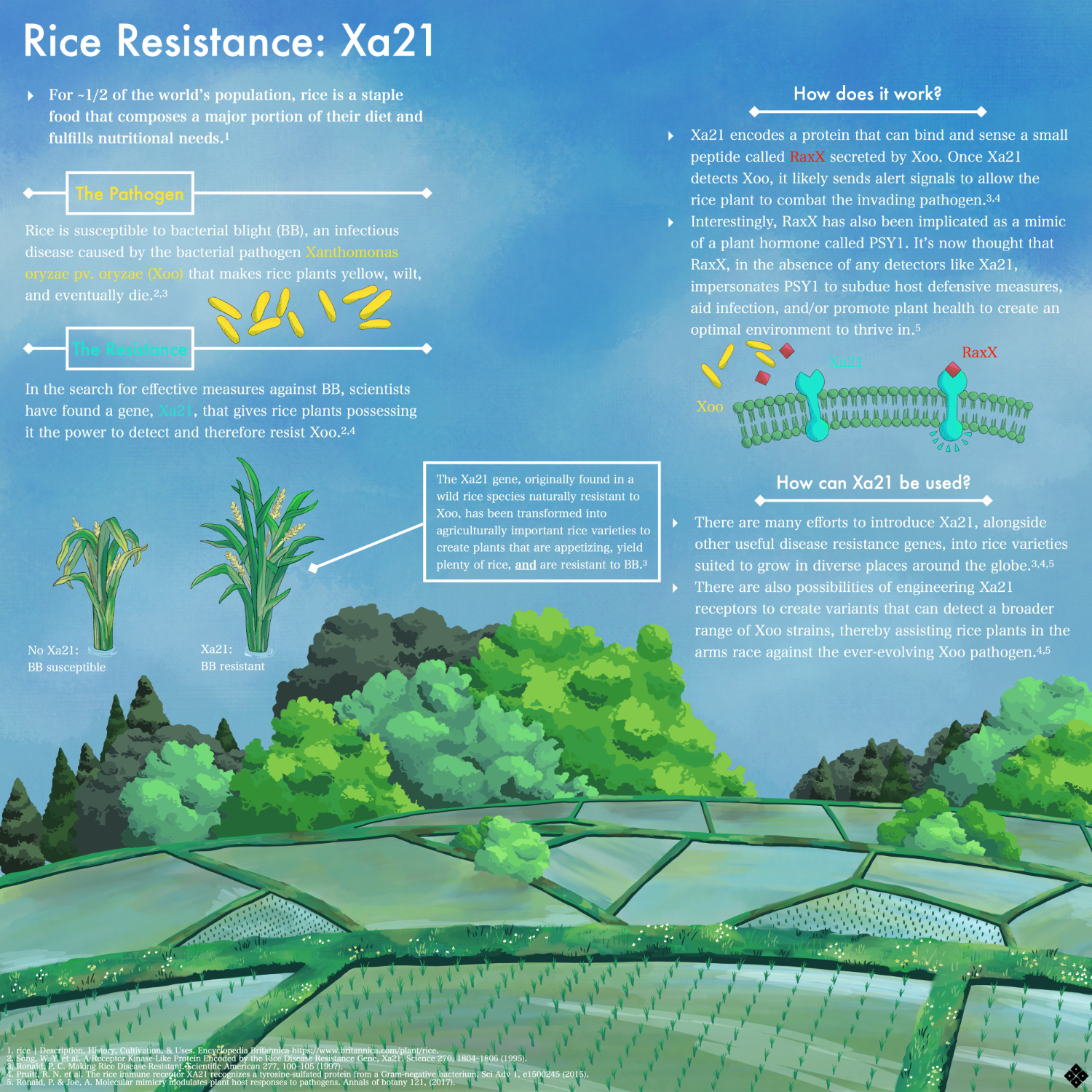The Ronald lab studies the innate immune response, using the host organism rice and the agriculturally important pathogen Xanthomonas oryzae pv. oryzae (Xoo). In the 1990s, rice geneticist Gurdev Khush and colleagues identified a wild species of rice, Oryza longistaminata, which conferred broad-spectrum resistance to Xoo. Khush showed that a single genetic locus, which he named XA21 (Xanthomonas resistance 21) was responsible for the resistance. Ronald hypothesized that Xa21 encoded a single protein that recognized a conserved microbial determinant.
In 1995, the Ronald laboratory isolated and characterized the rice XA21 genetic locus and showed that XA21 encodes a receptor kinase (aka pattern recognition receptor.) Subsequent discoveries in flies, humans, mice, and Arabidopsis revealed that animals and other plant species also carry membrane-anchored receptors with striking structural similarities to XA21 and that these receptors also play key roles in the immune response. In 2015, Ronald and team reported the isolation of the predicted ligand of XA21, a sulfated peptide named RaxX. (Ercoli et al. 2022)

(Photo credits: Yumino Sasaki)
Press
-
Molecular mimicry modulates plant host responses to pathogens, Annals Of Botany, 1/28/18
-
Rice disease-resistance find closes loop, Dailydemocrat, 7/25/15
-
Science Advances: Protein May Protect Rice from Bacterial Infection
-
Rice disease-resistance discovery closes the loop for scientific integrity, EurekAlert! July 2015.
-
"UC Davis researchers uncover key step in rice immune response". The Sacramento Bee. 2015-07-24
-
"Family Affair". The Scientist. 2011-04-01. Retrieved 2012-06-02.
-
Discovery Magazine, Feb 2012. Rice Reconnaissance Repels Bacterial Assault
-
Dateline UC Davis, Sept 26, 2008. Immune response is good, but not if it damages plant
-
Reuters, Dec 6, 2006. China delays GMO rice but raises biotech budget
-
Reuters, Nov 28, 2005. China committee not recommending GMO rice
-
Reuters, Nov 22, 2005. ANALYSIS-China slows GMO rice plan as concerns mount
-
Reuters, March 9, 2005. China close to production of "safe" genetic rice
-
San Francisco Chronicle, 1997: Rice-Gene Scientist Sharing Success With Poor Nations
-
The New York Times, 1995: Genetic Engineering Creates Rice Resistant to Destructive Blight
